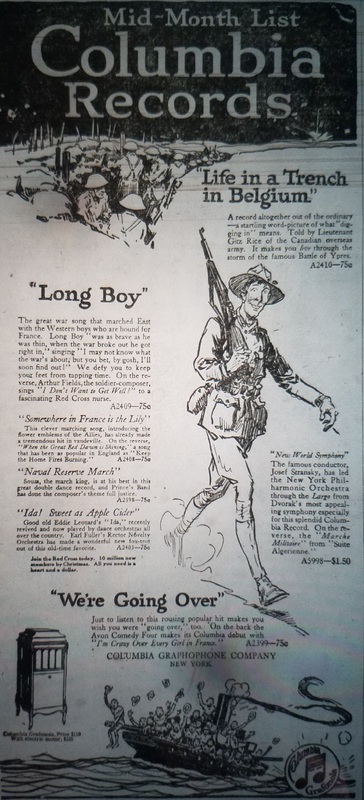Life in a Trench in Belgium
They Were Made Of Shellac
George Creel's CPI worked tirelessly, and they didn't stop at print media. The message of winning the war at all costs flooded everyday life. Recordings were no exception. The industry had just moved completely from the original wax cylinders invented by Edison and had completely moved over to gramophones. Many companies had proprietary machines; The Victor Talking Machine Company had the Victrola, which dominated the market until after the war, for example. The Victrola became a household name, but beyond the showy external amplifying bell, it was no more or less a standard gramophone like any other on the market. Columbia Records used Victor patented technology in their recordings, and in turn formed a symbiotic relationship and mutually marketed their products together.
Gramophones, also known as phonographs, were exceptionally popular. Sales of these items of luxury were brisk and more people had a phonograph than those who had a car, a refridgerator, and telephone combined. Although any machine would be able to play just about any record at the time, only the higher end models had fixed speeds for playback. Those who didn't relied on hand cranked spring tension, if not just hand cranking. "Around 70 rpm" was just as common and arbitrary as any other number could be. Edison machines played around 160 rpm, for instance. This increased the quality of the sound but decreased the length. The industry is not quite sure why, but 78 was adpoted as the industry standard for the electric motors in 1925. Most recordings by the dawn of American involvement in the Great War was at that speed. The records themselves were either 10 inch or 12 inch, and made mostly of shellac or occassionaly hardened rubber.
I urge the reader to listen to any of these recordings. I have chosen a few links that are mentioned in the ad on the page, and the first one is perhaps the most iconic song from the entire war.
